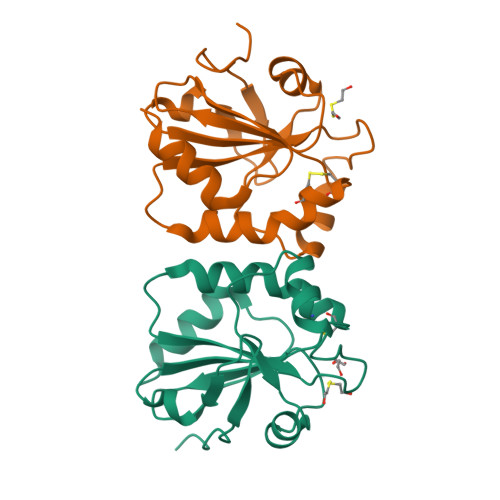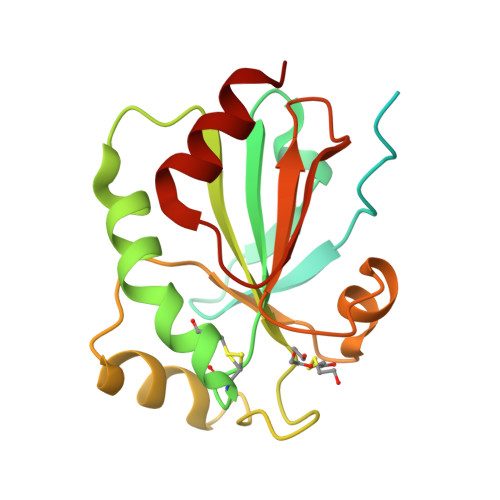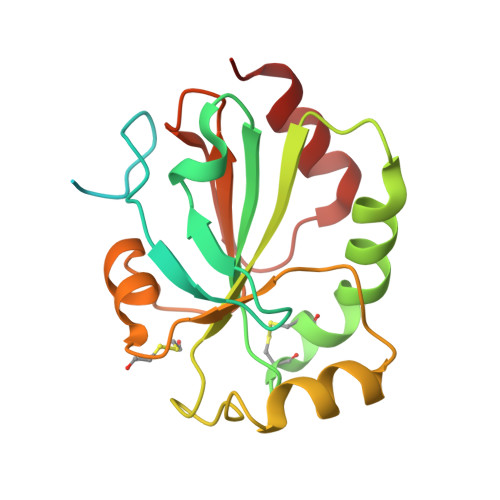Molecular architecture of Streptococcus pneumoniae surface thioredoxin-fold lipoproteins crucial for extracellular oxidative stress resistance and maintenance of virulence.
Saleh, M., Bartual, S.G., Abdullah, M.R., Jensch, I., Asmat, T.M., Petruschka, L., Pribyl, T., Gellert, M., Lillig, C.H., Antelmann, H., Hermoso, J.A., Hammerschmidt, S.(2013) EMBO Mol Med 5: 1852-1870
- PubMed: 24136784
- DOI: https://doi.org/10.1002/emmm.201202435
- Primary Citation of Related Structures:
2YP6, 4HQS, 4HQZ - PubMed Abstract:
The respiratory pathogen Streptococcus pneumoniae has evolved efficient mechanisms to resist oxidative stress conditions and to displace other bacteria in the nasopharynx. Here we characterize at physiological, functional and structural levels two novel surface-exposed thioredoxin-family lipoproteins, Etrx1 and Etrx2. The impact of both Etrx proteins and their redox partner methionine sulfoxide reductase SpMsrAB2 on pneumococcal pathogenesis was assessed in mouse virulence studies and phagocytosis assays. The results demonstrate that loss of function of either both Etrx proteins or SpMsrAB2 dramatically attenuated pneumococcal virulence in the acute mouse pneumonia model and that Etrx proteins compensate each other. The deficiency of Etrx proteins or SpMsrAB2 further enhanced bacterial uptake by macrophages, and accelerated pneumococcal killing by H2 O2 or free methionine sulfoxides (MetSO). Moreover, the absence of both Etrx redox pathways provokes an accumulation of oxidized SpMsrAB2 in vivo. Taken together our results reveal insights into the role of two extracellular electron pathways required for reduction of SpMsrAB2 and surface-exposed MetSO. Identification of this system and its target proteins paves the way for the design of novel antimicrobials.
Organizational Affiliation:
Department Genetics of Microorganisms, Interfaculty Institute for Genetics and Functional Genomics, Ernst Moritz Arndt University of Greifswald, Greifswald, Germany.



















